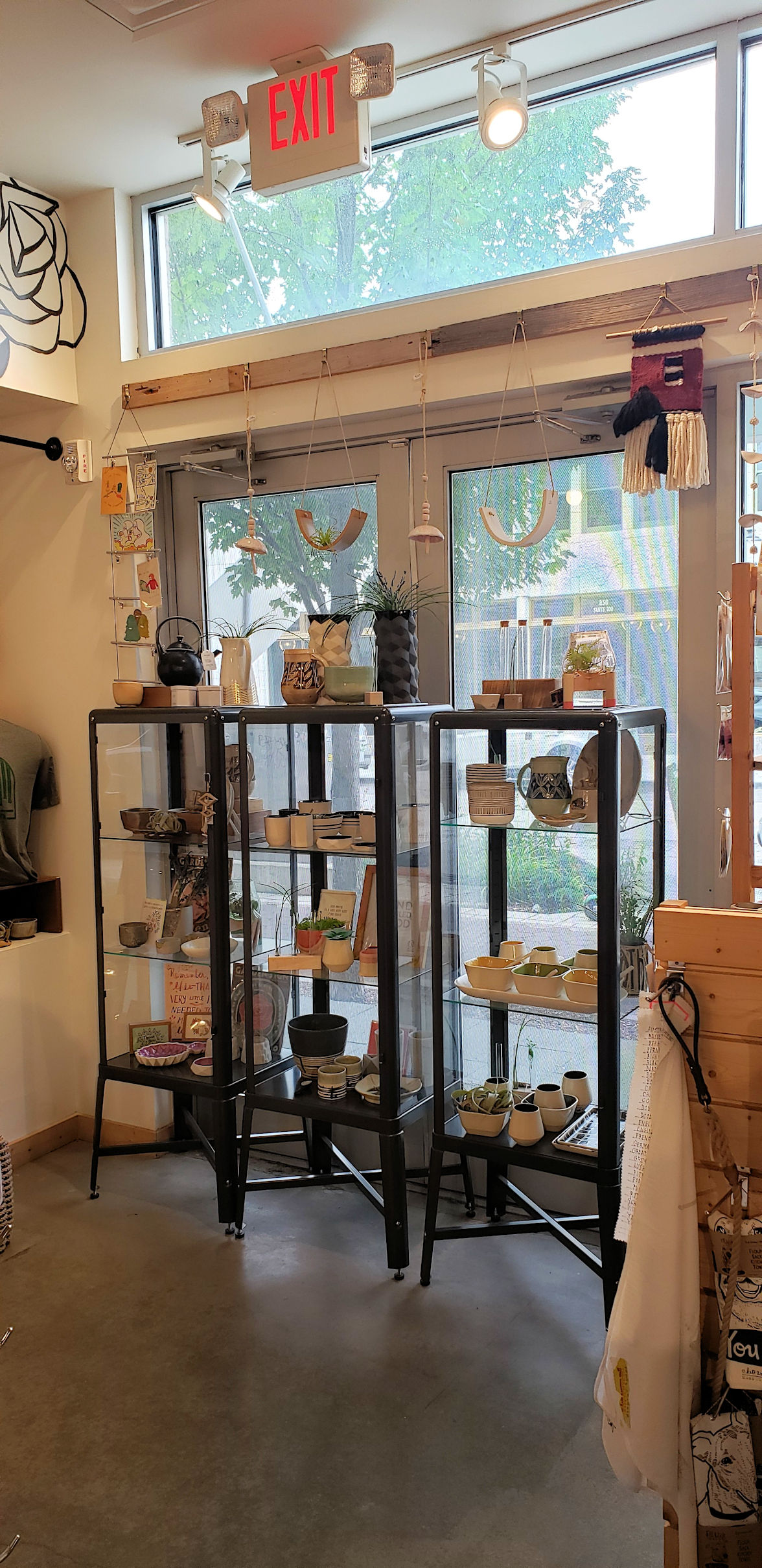I received today’s Wordless Wednesday photo from Andy Buse of Allegion, and I can’t think of anything witty or even educational to say. Why would someone think it’s ok to block a marked exit with display shelving? Maybe this retail store is not large enough to require a second exit, but if that’s the case, the exit sign should be removed or should direct building occupants to a usable exit. <sigh>
You need to login or register to bookmark/favorite this content.






I often find myself thinking there should be some standard form of sign that would indicate “This is a potential means of egress, but not likely to be the best; it will not require any special tools, keys, knowledge, or abilities, but is likely to require substantial effort, impose some risk of injury, or require assistance from a fire crew or other such personnel.” If a door, window, hatch, or other opening wouldn’t be needed for egress requirements, and it would be visually obvious that it will not be a convenient means of egress, having it be at least somewhat usable in case the normal exits are all blocked would seem better than having it walled off. The $50,000 question would be whether someone who takes the trouble to clear a path to the opening would be able to use it as a result.without being stymied by a lack of knowledge, tools, or keys.
We could get rich making those signs, John! 🙂
– Lori
And the exit sign has nice emergency lighting
Lori, I truly believe most small business owners are oblivious to Life Safety Codes. I believe they learn by being cited.
I do not think they would even consider blocking the exit if they new what they were doing.
How can we change that??
– Lori
In my experience, it has been a pretty even split combination of “not knowing” and “not caring” in terms of business owners.
For example, who hasn’t seen a stack of high chairs blocking an exit in just about every restaurant? That one is mostly on the designers or architects for not planning a safe place for operational items. Regardless, managers and owners turn a blind eye to the practice.
In retail, every square inch will be used for display, distances between displays is usually way too narrow, and when the exit doors are blocked like this I shudder to think what the secondary exit through the storage room is going to look like.
Perhaps “giving credit” to the city and state where these pictures are found might help motivate some local building and fire inspectors to “improve their game” a bit. With a couple of hundred thousand building and fire inspectors throughout the country, getting more of them aware of idighardware and DHI courses would help take fire and door safety to another level.
Thanks David –
I agree, raising awareness of the available information and training helps, but it seems like some people don’t want to know.
– Lori
The first step is getting educated inspectors to cite the offenders. I have seen the inspectors that look for lit exit signs, extension cords, and then they are done.
I agree, Rich. It’s amazing how some inspectors are focused on specific things and walk past major violations.
– Lori
Lori, the big problem there is the handle is higher than accessibility allows. I’d bet that the cases will move out of the way with less than #5 of force if you pull gently on the top of them. The ceramics inside may not fare so well, but that’s not “special knowledge” to open the door 😉
😀
Lori,
I think the only way is through store owners’ pocketbooks. If the store owners insurance contact information were a requirement for occupancy and then the insurance company notified anytime there was a code violation, which would be cause for raising the premiums for insurance because of those citations, then you may get some store owners wanting to pay attention instead of fines and higher insurance fees. I know there was talk of something along those lines back in 08, or I thought I had heard.
If only we could get the insurance companies to care!
– Lori
“if they knew what they were doing”
and
“how can we change that?”
There are some people who are annoyed when others park cars and block them in, or use barrier-free spaces when not allowed to. These people have printed up little notes to leave under windshield wipers, notifying the offending parkers of their misdeeds.
May a small, business-card sized note to hand to a clerk with “please give this to the manager / owner” request, that told them “I was in your store and saw that A REQUIRED EMERGENCY EXIT IS BLOCKED IN VIOLATION OF THE LAW – please move your display / storage / etc.out of the way. I will report this to the local Fire Marshal”, with appropriate followup to the Fire Department’s on-line contact point, could be a start.
That’s a good idea, Joel!
– Lori
We have one like this in our neighborhood, the door has a sign visible the outside that says “this door is blocked ” so that helps first responds but doesn’t do anything to help people needing out of the building. The manager didn’t care and said they have had 3 inspections and they didn’t say a word. Wish for the best.
Exactly right, Mike!
– Lori
In case of Emergency, you break it you bought it!!
Gives s a new meaning to the term “crash bar”.
I wonder if the answer lies with landlords. If the tenants doesn’t know or understand the codes, does maintaining a safe environment fall to the landlords. Should AHJs require landlords to conduct frequent inspections of tenant spaces and submit the report to code compliance?
It’s everyone’s fault if the code issue results in a major problem, but until then, people tend to look the other way.
– Lori
I’d love to be there during a fire drill. I would certainly enjoy helping “move” the shelves out of the way.
Why don’t we have fire drills outside of schools? Probably too many architects like me would giddily enjoy smashing everything impeding egress and ruin the inconvenient and annoying exercise for everyone else.